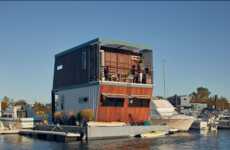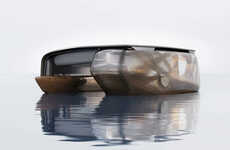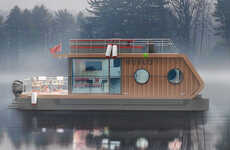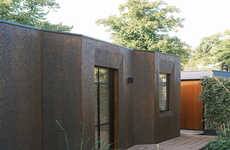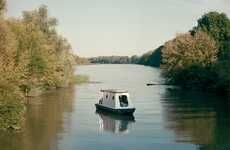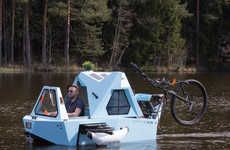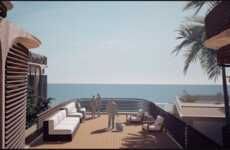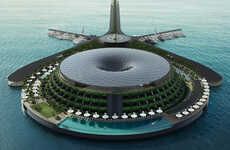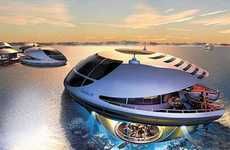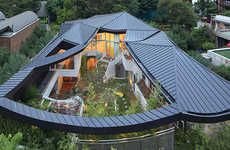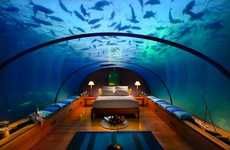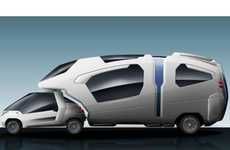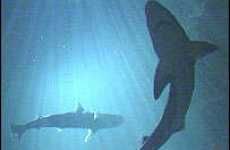
Trilobis 65
References: sub-find & weburbanist
We've seen all sorts of cool homes on Trend Hunter, like tree houses and shipping container homes. We've also seen a rising obsession with aqua culture, so it's neat to feature something that combines the two with this extreme house boat concept, the Trilobis 65.
Similar to the Jelly-Fish 45 Habitat, the floating luxury homes deigned by Giancarlo Zema are semi-submerged. Each pod is meant to house up to six people living at sea while being as environmentally friendly as possible, to the land, air and water around it. When it moves from concept to reality, it will likely be made in Vancouver, British Columbia.
"It is ideal for living in bays, atolls and maritime parks," the site says. "The main aim of the project is to allow anyone to live in a unique environment through a self sufficient, non-polluting dwelling cell in unison with their ocean surroundings."
At its longest, it measure 20 metres, and its widest portion is 13m across. Its maximum speed is 7 knots, the ship deriving its power from ballard fuel cells, solar, wind and diesel.
The floor designated for sleeping will have wraparound windows surrounding two single bedrooms and two double, each with its own bathroom and windows 3 feet below the water's surface.
It's part of a houseboat community concept, or floating village, which involves a pronged dock or private marina that allows for the connection of five of these liveable water pods.
Similar to the Jelly-Fish 45 Habitat, the floating luxury homes deigned by Giancarlo Zema are semi-submerged. Each pod is meant to house up to six people living at sea while being as environmentally friendly as possible, to the land, air and water around it. When it moves from concept to reality, it will likely be made in Vancouver, British Columbia.
"It is ideal for living in bays, atolls and maritime parks," the site says. "The main aim of the project is to allow anyone to live in a unique environment through a self sufficient, non-polluting dwelling cell in unison with their ocean surroundings."
At its longest, it measure 20 metres, and its widest portion is 13m across. Its maximum speed is 7 knots, the ship deriving its power from ballard fuel cells, solar, wind and diesel.
The floor designated for sleeping will have wraparound windows surrounding two single bedrooms and two double, each with its own bathroom and windows 3 feet below the water's surface.
It's part of a houseboat community concept, or floating village, which involves a pronged dock or private marina that allows for the connection of five of these liveable water pods.
Trend Themes
1. Semi-submerged Homes - Opportunity to innovate semi-submerged housing structures as a unique environment in line with the ocean surroundings.
2. Aqua-living - Opportunity to design and market luxurious semi-submerged housing structures as well as infrastructure to support the concept of houseboat community.
3. Green Energy - Opportunity to innovate new technologies and solutions related to sustainability and using green energy sources in maritime residences.
Industry Implications
1. Real Estate Industry - Opportunity for real estate developers to invest in semi-submerged housing structures located in bays and maritime parks.
2. Shipping Industry - Opportunity for shipping companies to innovate and market semi-submerged shipping containers as a viable living option.
3. Green Energy Industry - Opportunity for green energy companies to provide sustainable solutions such as the use of wind and solar energy sources to support electricity needs in semi-submerged homes and communities.
5.3
Score
Popularity
Activity
Freshness

